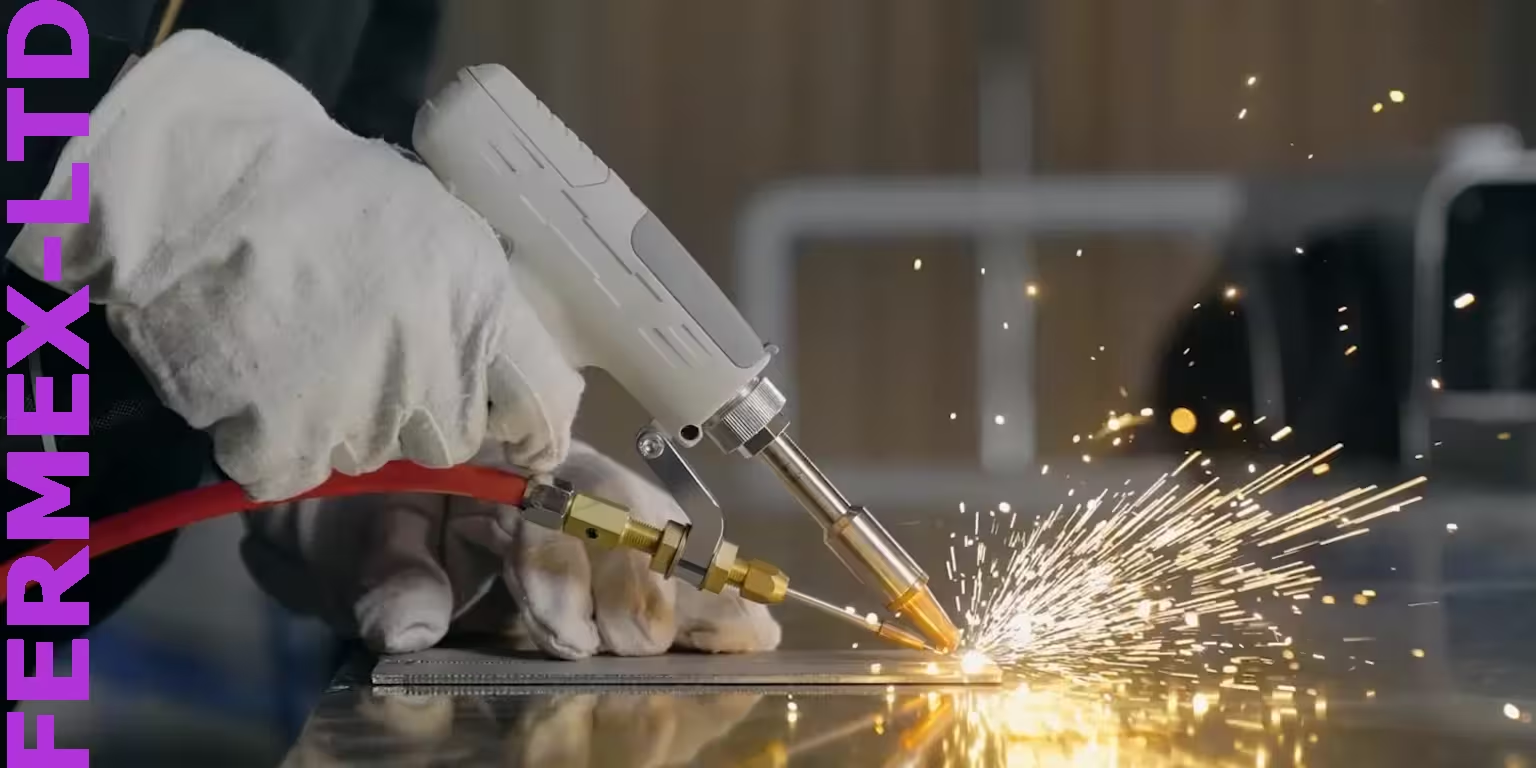
What is Laser Welding?
Handheld laser welding is an excellent solution for joining metals of various compositions and thicknesses. This method provides strong and aesthetically pleasing joints. The advantages of handheld laser welding lie in its ability to form thin and precise spot welds, which is particularly valuable when working with complex configurations and small details. The equipment allows for welding materials of different thicknesses and with varying thermal and electrical characteristics. Handheld laser welding is successfully used for joining diverse materials, including steel, aluminum, stainless steel, copper, titanium, and more.
The laser emitter used in our equipment creates an extremely narrow, high-temperature zone within the material being welded. This ensures a precise, fast, and thermally undistorted welding process for metal components.
Laser welding is actively used in various industries, such as the automotive industry, aerospace industry, and medical equipment manufacturing.
Laser welding offers several advantages over traditional manual arc welding
- Accuracy
Laser welding provides significantly greater accuracy and smoothness of welded joints compared to manual arc welding. This is especially important when working with parts that require a high degree of precision.
- Impact on Material
Laser welding uses less heat, which reduces damage to the surrounding material and parts. Manual arc welding, in contrast, can lead to more significant thermal impact.
- Speed of Execution
Laser welding is typically performed faster than manual arc welding, contributing to time savings and increased productivity.
- Cost
Using laser welding can reduce labor and material costs due to its high efficiency and speed of execution.
Laser Welding Can Join Various Metals
- Steel
This method is widely used for welding carbon steel, stainless steel, and alloy steels, ensuring strong and reliable welded joints.
- Aluminum
Laser welding is effective when working with aluminum and its alloys, such as aluminum with magnesium. It ensures high joint strength on aluminum parts.
- Copper
It is applicable for welding various types of copper, including thin sheets and copper alloys, while maintaining high electrical conductivity.
- Stainless Steel
Laser welding is widely used for joining stainless steel parts, preventing oxidation and corrosion.
- Titanium
It is effective for welding titanium materials, ensuring high joint strength. It is widely applied in the aerospace and medical industries.
- Brass
Laser welding is used for welding brass, an alloy containing copper and zinc. It is applied, for example, in jewelry and musical instrument manufacturing.
We use the GWEIKE LCW2000 laser welding machine
Laser Welding Process Parameters with GWEIKE LCW2000
- Metal Thickness: 0.5 – 3 mm
- Laser Output Power: 2000 watts
- Working Welding Speed: 0-120 mm/s
When you need to create a durable joint without damaging the metal or compromising aesthetics, then laser welding is the choice. Laser welding opens new horizons of possibilities. It is the most progressive method, enabling fast, economical, and durable joining of elements of varying thickness and texture, made from any type of metal.
